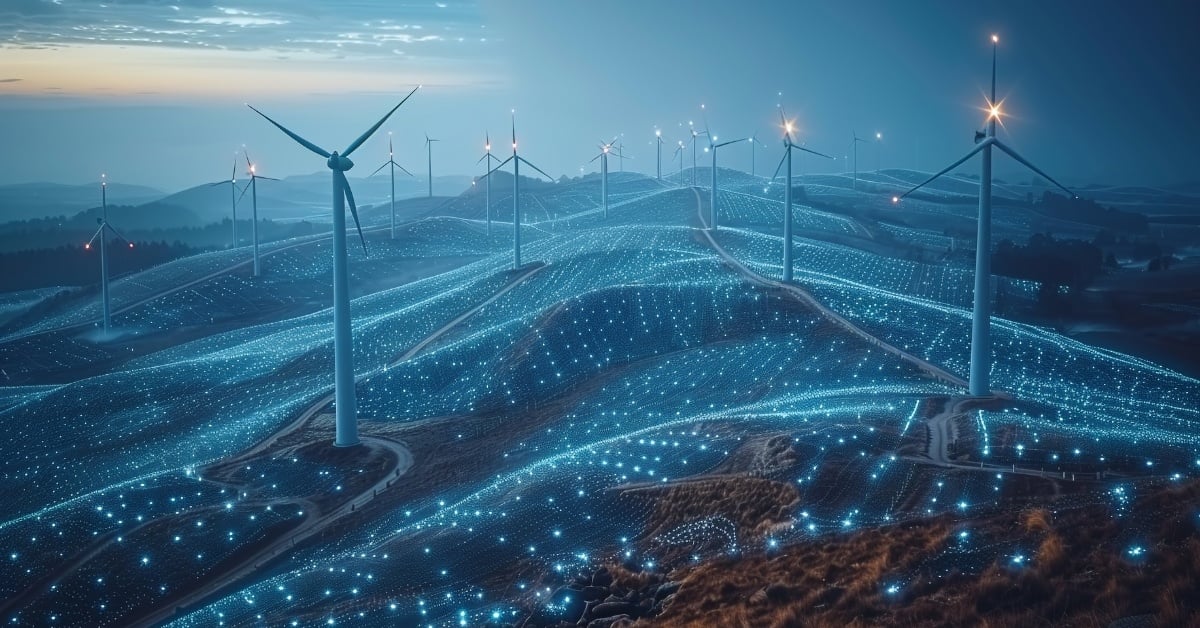Electricity demand is set to grow exponentially, especially in emerging markets. In these regions, demand will rise by over 2,600 TWh by 2030 — that’s five times Germany’s current electricity demand.
Enabling this expansion while combating climate change relies on the rapid rollout of renewables. Yet, traditional power grids are not designed to deal with intermittent energy sources like wind and solar.
One primary challenge is the lack of real-time network management which may result in voltage instability, frequency inconsistency and harmonic distortion. Network instability can lead to costly power outages, disrupting businesses and households.
What are smart grids and why do they matter?
Digital technologies, sensors and software enable utility providers to match supply and demand more effectively and in real time. This IoT-driven approach to energy distribution, known as a smart grid, can help minimize costs while maximizing power reliability and stability.
The IEA estimates that to meet global net zero targets, investment in smart grid technologies will need to more than double from around USD 330 billion per year to USD 750 billion by 2030.
Digital substations are the building blocks of smart grids. They enable streamlined data processing, seamless communication and predictive maintenance through real-time data analysis. IoT-enabled sensors detect equipment failures early, allowing the operators to perform proactive maintenance and minimizing the risk of unplanned outages.
Another core benefit of smart grids is energy flow optimization. Advanced analytics and machine learning algorithms optimize grid operations dynamically, leading to improved efficiency and reduced wastage by adjusting voltage levels and distribution patterns based on real-time demand.
This enhanced flexibility facilitates the integration of renewable energy sources into the grid while making the system more resilient to extreme weather events or equipment failures.
All-in-one DMSs for smart grids
Energy DMSs are critical to the success of smart grids. This is where solutions like the zenon Software Platform from COPA-DATA come in.
zenon enables seamless integration into existing control stations and systems and provides the basis for an all-in-one DMS for grid monitoring, substation control and process visualization platform in the control room or a gateway to higher-level systems.
With zenon, operators can control multiple renewable energy sources including hydropower plants, wind farms, and photovoltaic plants. The system also connects energy storage systems to the grid, enabling visualization of live data while reporting on archived measurement data.
Alarms immediately trigger automated responses and processes when parameters such as line frequency are exceeded, enabling standby personnel to intervene promptly to prevent outages.
In addition, zenon automatically logs events and measured values to create a complete data archive to make informed operational decisions to optimize the grid. The zenon Process Recorder chronologically displays recorded events, measured values and trends directly in the process image.
Towards a sustainable grid
Digitalization and the IoT enable utility operators to transition from traditional energy distribution networks to smart grids.
Smart grids optimize power supply stability and reliability while integrating renewable energy sources critical to achieving net zero.
A versatile DMS that supports multiple communication protocols is core to the rapid expansion of smart grids. Software platforms like zenon are the backbone of digital substations enabling proactive grid infrastructure management, with minimal downtime and optimal resource allocation.
More on zenon for grids.

